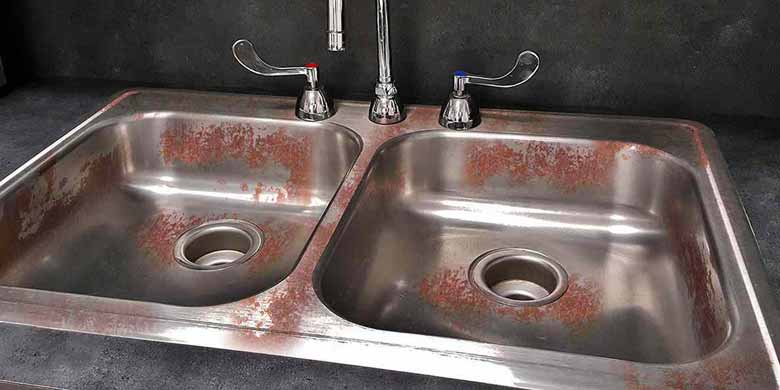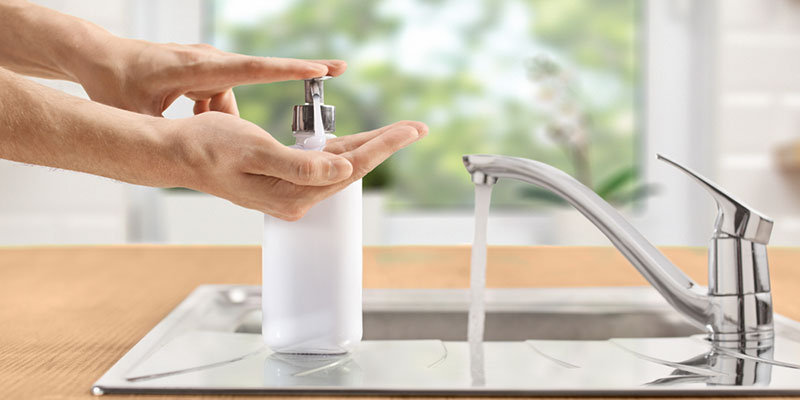How To Cook Rice In Rice Cooker Without Sticking
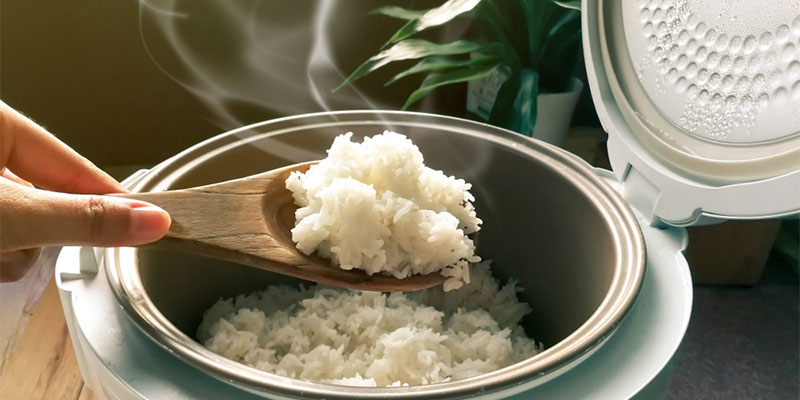
Rice Cooker Without Sticking
Using a rice cooker is a great way to cook rice perfectly each time. But if you face something unwanted like rice is getting stuck to the bottom of your cooker, well, that’s an issue. In this article, you will know how to cook rice in a rice cooker without sticking.
You will find it helpful since we have laid out with every can’t-miss information regarding this topic. Sounds enticing? Let’s not talk much just dive right in!
Shall we?
Why Does Rice Stick to The Bottom of The Rice Cooker?
If you can use a rice cooker properly, it will cook the rice without sticking as well as the bottom of the cooker will not contain any remaining water in it. So, if you find your rice got stuck, it can happen for any of the reasons below:
- A lack of water
- Before cooking, the rice may have not been rinsed
- Overcooking
These are the most common reasons why your rice gets stuck to the bottom of your rice cooker. However, you can fix it even after your cooking is done. You may add more water, add a tablespoon of oil, rinse your rice well before you cook it.
But, if you can be careful from the very first moments, you can prevent the rice from sticking and have a bowl of perfectly-cooked rice.
How To Cook Rice In Rice Cooker Without Sticking- 7 Easy Steps
Follow these easy steps to get the rice cooked perfectly, no sticking at all!
Step 1: Measure the Rice
 There are variations in the cookers. In some rice cookers, you may need to place the rice directly in your cooker while other cookers come with a removable pot or bowl. And, most rice cookers have a measuring cup, if yours doesn’t have one, you can use a usual measuring cup.
There are variations in the cookers. In some rice cookers, you may need to place the rice directly in your cooker while other cookers come with a removable pot or bowl. And, most rice cookers have a measuring cup, if yours doesn’t have one, you can use a usual measuring cup.
Although it depends on the variety, 1 cup of uncooked rice will end up generating 2 to 3 cups of cooked rice.
Make sure you leave enough room for such an expansion, otherwise, there’s a risk of spilling your rice cooker.
Step 2: Rinse the Rice
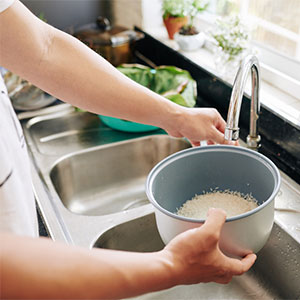 To prevent the rice from sticking, you should always rinse your rice in cold water, it will let some of the starches go from the grains. So, yes, hold your pot under the faucet and stir when you add water.
To prevent the rice from sticking, you should always rinse your rice in cold water, it will let some of the starches go from the grains. So, yes, hold your pot under the faucet and stir when you add water.
Once the rice is completely submerged, drain the rice carefully. You should repeat it twice, you will find the water clearer each time you rinse it.
And, how much starch you are able to wash depends on which type of grain you are going to cook.
However, rinse it no matter which type of rice you are dealing with, it will help to prevent the rice from sticking.
Step 3: Measure the Water
Now, it’s time to measure the water. Remember, the ratio of rice and water will affect the cooking. So, ‘how much water should you add?’, Well, the answer is ‘it depends’.
Yes, it’s dependent on which type of rice you are going to cook as well as how moist you want to make it. You will find the recommended amount of water in the graduated marks that come with your cooker or instructions that are on the package of the rice.
However, here are some suggestions you can follow to keep the rice and water ratio balanced.
| Rice Type | Amount of Rice | Amount of water |
| Brown rice (long-grain) | 1 cup | 2 ¼ cups |
| White rice (long-grain) | 1 cup | 1 ¾ cups |
| White rice (short grain) | 1 cup | 1 ¼ cups |
| White rice (medium grain) | 1 cup | 1 ½ cups |
| Parboiled rice | 1 cup | 2 cups |
| Basmati or Jasmine rice | 1 cup | 1 cup |
Measure the rice and water carefully to seal the chances of messing things up. However, it’s not tough to maintain a perfect ratio, especially when we’ve compiled it in this table.
Step 4: Add a Teaspoon of Oil or Other Flavors
Adding flavors to your rice is optional, however, adding oil helps the rice prevent it from sticking to the bottom of your cooker. You can simply add the flavorings to the water before you turn on the cooker.
Vegetable oil, butter, or any other fat will work well here. These will lubricate your rice as well as prevent them from sticking to each other. Initially, right after you add the oil, it may remain on top of the water. As it starts cooking, the oil will submerge with the rice over time.
If you want to cook rice by following an Indian style, you can add some pieces of bay leaves or add a couple of cardamom seeds to the water.
Step 5: Push the Rice Grains with An Utensil
Now, push the rice grains off the sides using either a plastic or a wooden utensil. Make sure all the rice grains around your pot are returned to the water. Otherwise, the remaining rice over the water surface can burn when it cooks.
And, stirring the rice under the water level is needless here because it may release extra starch which will result in making stickier rice.
In this step, we suggest you check if your rice cooker has any special option or not. Because some rice cookers may contain nothing but an off/on switch whereas others come with different settings. For example, there you may find additional settings for white or brown rice, or your cooker can delay the cooking for the desired time or something like that.
Step 6: Cook the Rice
 It’s time for cooking the rice in your cooker. Does your rice cooker have a removable pot? If it does, place the pot (you’ve kept the rice and water in) into the cooker, and carefully close the lid of your cooker.
It’s time for cooking the rice in your cooker. Does your rice cooker have a removable pot? If it does, place the pot (you’ve kept the rice and water in) into the cooker, and carefully close the lid of your cooker.
Now, plug it in, and turn the switch on. That’s it, now you can grab a cup of coffee and wait until the rice is done. How to know whether your rice is cooked? It’s simple, once the rice is done, the switch of your cooker will click like a toaster. And, an interesting part is, the rice will stay warm until you are unplugging it.
If you are planning to lift the lid as you can check on the rice, stop, there’s no need to do this. The development of steam inside your pot affects the cooking process.
So, if you open the lid and let the steam escape, you may end up having improperly-cooked rice.
Step 7: Leave the Rice to Steam
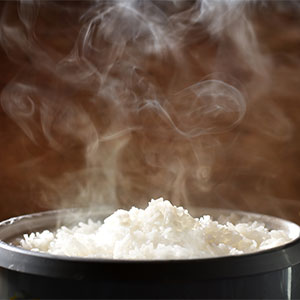 You are done cooking the rice perfectly! But wait a few more minutes and allow your rice to rest. Do not open the lid right after you hear the click of your cooker (which indicates the rice is done).
You are done cooking the rice perfectly! But wait a few more minutes and allow your rice to rest. Do not open the lid right after you hear the click of your cooker (which indicates the rice is done).
Wait for around 15 minutes before you remove the lid. It will seal the chances of sticking the rice on the bottom of your cooker.
Finally, you can fluff and serve your food. When you notice there is no water left, your rice is ready to eat.
All you need to do now is to stir the rice using a fork or any other utensil and then serve it.
What to Do If The Cooked Rice Seems Mushy
If you rinsed the rice properly, the cooked rice should not seem mushy. Because it happens only when excessive starch is released from the grains and they split. So, what if you fail to cook the rice exactly as the instructions say? Well, if you have messed a bit up, there are ways to fix it.
You can place the rice in a colander, rinse it using cool water, and carefully use your fingers to separate the grains. That’s it.
However, if you find the rice extra mushy, the better idea is to start over. Use that overcooked rice for any other purpose and make a new batch. You can do a lot with the overcooked rice- make fritters, turn it into fried rice, add it to your soup, and so on.
What to Do If The Rice is Undercooked
Unfortunately, you have made the rice too dry or too chewy, what can you do now? Okay, that’s also fixable. Move the rice back to your stove and add ¼ cup of water to it. Cook for a couple of minutes for steaming your rice.
For making the same thing happen, if you get back the undercooked rice to your rice cooker and do not add enough water, chances are this will result in burning.
How to Adjust for Altitude
In case, your living area is at 3,000 feet or above, the rice you cook may end up being properly cooked. How to fix it? Easy, you need to add an extra ¼ to ½ cup of water for one cup of rice.
At a high altitude, there will be a lower air pressure. For this, here, water will become boiled at a lower temperature. As a result, your rice takes a bit longer to cook.
What to Do with The Leftover Water While Your Cooking is Done
If you are sure that you added just the right amount of water for cooking the rice and still there’s leftover water in it, your rice cooker model is maybe defective. So, you may do something it like replacing the cooker or else. However, for the current batch that you’re dealing with, carefully drain the water. Now, if you think that this rice texture is okay, you can serve it. Otherwise, back the pot in your cooker and turn on the switch, let the water be used up.
- Best Splatter Screen For Safe and Clean Cooking
Frequently Asked Questions
Conclusion
So, yes, that’s all we stored for you how to cook rice in a rice cooker without sticking. Hopefully, you will do the job perfectly from now on.
Cooking rice perfectly each time is not a big deal if you know how to do it in the right way. All you need to know is how much water you should add for the individual type of rice and when to serve the rice. And, since you’re to end reading the article, you now know all of it!
Happy Cooking!

